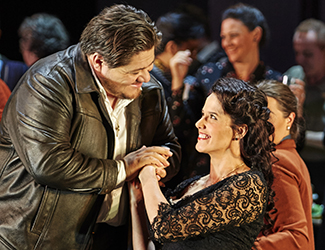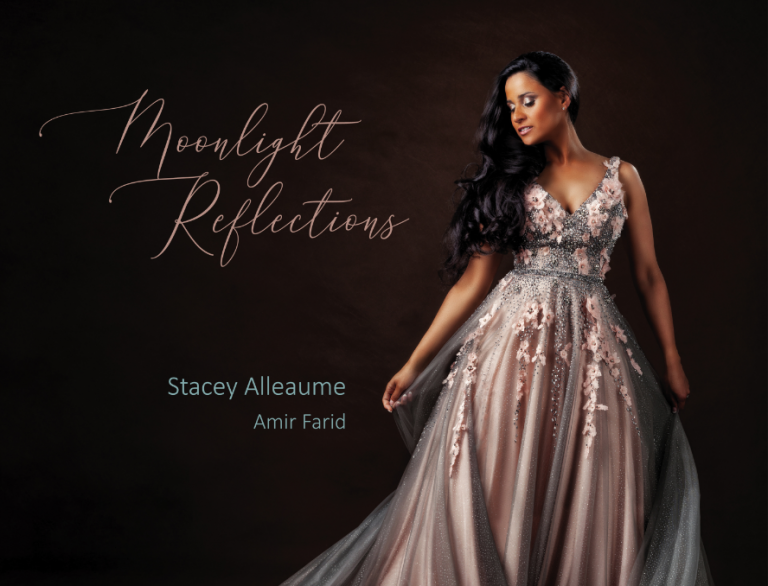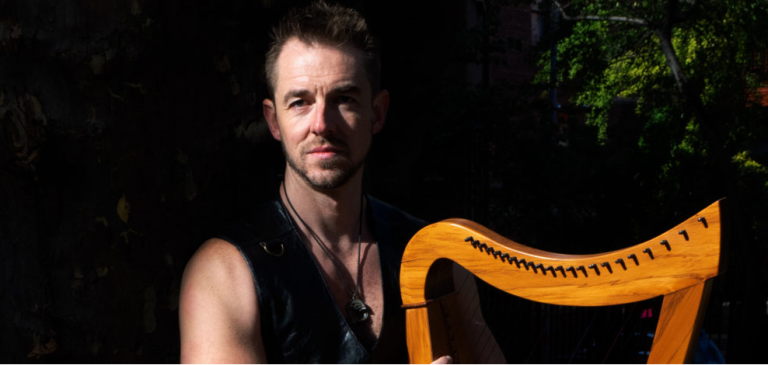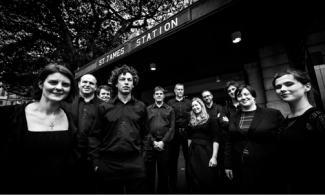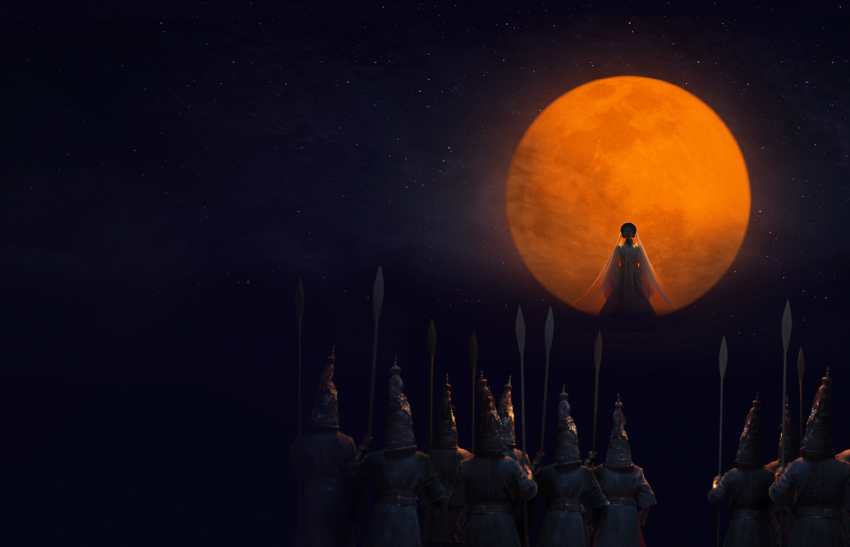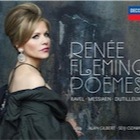Opera Review: Cavalleria Rusticana And Pagliacci / Opera Australia
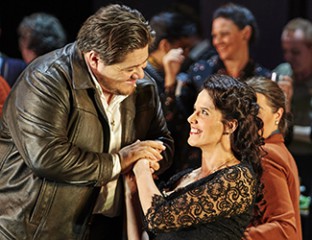
Photo credit: Keith Saunders.
Cavalleria Rusticana – Pietro Mascagni; Pagliacci – Ruggero Leoncavallo
Opera Australia, Joan Sutherland Opera Theatre, Sydney Opera House,
12 January 2017
Opera Australia has continued its summer season with a new production of Cavalleria Rusticana and Pagliacci, following its customary New Year performances of La Bohème. This double bill is a joint enterprise with the Royal Opera House, Sweden’s Göteborg Opera and La Monnaie, Brussels.
Although these two operas are distinct works by different composers, they are generally performed together as a Cav and Pag double bill, and the Italian director Damiano Michieletto has taken this as a cue to link the two works dramatically. Consequently, several of the main characters from one opera appear in the other, so that both of them are set in the same traditional southern Italian village. During the intermezzo of Cavalleria Rusticana for instance, we see the first meeting of Nedda and Silvio, and Santuzza and Mamma Lucia return later in Pagliacci.
The two operas are prime examples of the Italian verismo (realism) style and Michieletto has staged them naturalistically, paying considerable attention to incidental details. The town bakery, for example, gives the appearance of being fully functional. The action has been updated to the 1980s.
The set, designed by Paolo Fantin, fills the stage with a revolve which provides internal and external views of a single location: a bakery in Cavalleria Rusticana and a small theatre hall in Pagliacci. This provides a strong feeling of unity of place. The set is rather claustrophobic, which sometimes impedes the movement of the chorus, although it also reinforces the tight bonds which often typify small rural communities. The southern Italian setting is heightened by effective lighting designed by Alessandro Carletti and realised in Sydney by Gary Dooley. The everyday costumes designed by Carla Teti underline the normality of the community.
The performance opens on a dramatic high with a gripping tableau during the Cavalleria Rusticana orchestral introduction showing villagers gathered around the body of Turiddu. The drama is soon ratcheted up a further notch by the entrance of a distraught Mamma Lucia. This dramatically powerful opening is later repeated at the conclusion of the opera. The production has been revived by London-based Rodula Gaitanou, assisted here by Andy Morton who will revive the production in Melbourne later this year.
The singers are mostly drawn from the large reservoir of excellent performers resident in Australia. Both Diego Torre and José Carbó sing a role in each opera, which further links the works dramatically. Each time they are both in love with the same woman, though under different circumstances.
As Turiddu, Diego Torre was well costumed as the leather jacketed adventurer who nevertheless breaks down rather rapidly. His strong voice fills the auditorium, especially at the top of his range, and he is thoroughly at home with the verismo idiom. Drama is not normally Torre’s long suit though he was dramatically more convincing as Canio, especially in the surreal episode during the play within a play. At this point the hitherto literal production takes a detour through Canio’s mind to explore his mental breakdown.
In Cavalleria Rusticana, José Carbó’s Alfio is the local boy made good: a cool character who is very much in control of the situation. As always, Carbó is vocally strong and even throughout his range. He opened Pagliacci with an exemplary rendition of the prologue: superb both vocally and dramatically. Mirroring the prologue, this production reverts to the authors’ original intention of giving the final line, ‘La commedia è finita’, to Tonio instead of Canio, and Carbó delivered it with twisted relish and devastating effect.
Turiddu’s abandoned love, Santuzza, is sung by soprano Dragana Radakovic who made an impressive debut with the company last year singing Turandot on Sydney Harbour. Her fine spinto soprano is strong and well suited to the role. She projected a more wilful Santuzza than is often seen, though she took some time to settle down dramatically and her characterisation was somewhat diluted by a recurring need to watch the conductor.
The fourth corner of this convoluted love quadrilateral, Lola, is securely sung by the adaptable Sian Pendry. This is a rather flighty interpretation of the role – presumably as required by the director. At times it seemed a little too provocative to be dramatically probable in the village setting. Nevertheless, Pendry carried out the interpretation consistently and sang with her usual reliability. In the smaller role of Mamma Lucia, Dominica Matthews sang well, delivering a compassionate interpretation and twice dramatically sustaining the heart-broken mother of her murdered son.
One of the dramatic linkages between the two operas was that during Cavalleria Rusticana, a poster was mounted on the bakery wall advertising the forthcoming performance by the travelling pagliacci. This is what we see after interval.
The new singers in this half were headed by the Russian-born soprano Anna Princeva who is making a promising company debut as Nedda. Dramatically, vocally and visually she gave an excellent performance of the young woman who suddenly sees a possible way out of her constrained existence. Her aria about the freedom of a flock of birds was particularly enjoyable.
Her new lover, Silvio, was sung by Samuel Dundas, whom we had seen previously in Cavalleria Rusticana making bread in the bakery. This Silvio is a very attractive, young and athletic lover. Although his baritone is not as large as some, it is well suited to this role. His musicianship and characterisation were unfailing and his performance was very satisfying. In the small role of Beppe, John Longmuir sang well and was dramatically energetic.
The orchestra was directed by Andrea Licata in a passionate, full-blooded performance. Tempi were all well-judged and the dramatic climaxes well shaped. There were many fine instrumental solos and a lush, full string tone – especially from the lower strings. There were occasional problems of synchronisation between the stage and the orchestra but these will most probably be ironed out as the season progresses.
On this occasion, the fine Opera Australia Chorus were at less than their usual top form. They sang with their familiar strong tone but their ensemble was not as tight as usual and there were ongoing problems of synchronisation with the pit. This may have been due to their high level of on-stage activity, or their often cramped placement on the stage, or perhaps just a need for more stage rehearsal. Nevertheless this will presumably be resolved during forthcoming performances. The children’s chorus capered energetically as the village children.
This is a production of the popular Cav and Pag pairing that will undoubtedly serve the company well for many years. It can be warmly recommended for its superb singing and for its high-voltage drama.
Larry Turner for SoundsLikeSydney©
Performances in the Joan Sutherland Theatre continue until 4 February with performances in Melbourne with the same cast in May 2017.
Larry Turner is an avid attender of concerts and operas and has been reviewing performances for Sounds Like Sydney for several years. As a chorister for many years in both Sydney and London, he particularly enjoys music from both the great a capella period and the baroque. He has written programme notes for Sydney Philharmonia, the Intervarsity Choral Festival and the Sydneian Bach Choir and is currently part of a team researching the history of Sydney Philharmonia for its forthcoming centenary.

